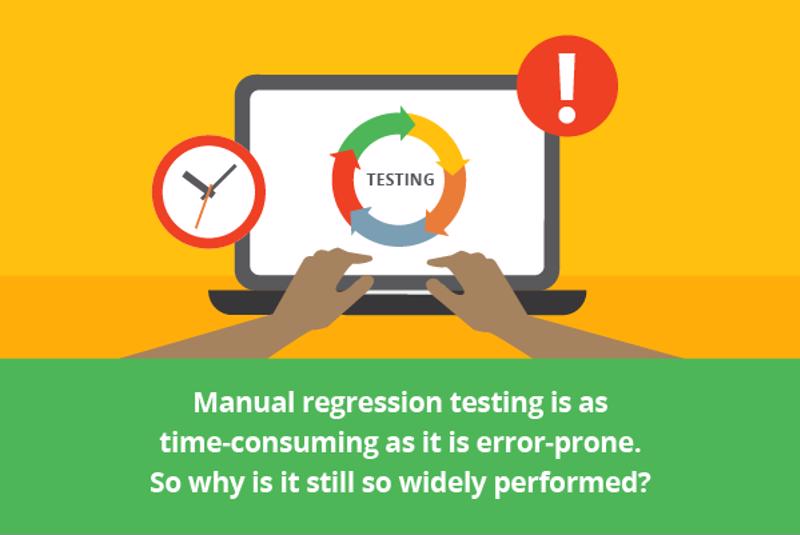Manual regression testing is as time-consuming as it is error-prone. So why is it still so widely performed? A big reason why is that, at many organizations, it’s always been done that way, for better and (more often the case) for worse.
A look at manual regression testing: Why it’s done and why’s it risky
First things first: Regression testing is essential to discovering flaws in existing software in the wake of an update or change. So it’s not the purpose that’s the problem, but rather the execution.
The ongoing popularity of manual regression testing can be traced to several factors:
- Before the emergence of automated alternatives, it was the only feasible, systematic method for testing the integrity of an application or service after making any changes. For this reason, it benefits from sheer institutional and operational inertia.
- Manual methodologies are also common for some types of ad hoc testing, such as exploratory UI testing, which may supplement regression testing, as a way of finding additional usability problems and various edge/fringe cases.
- To organizations with limited IT staff and low budgets, manual tests may seem more cost-effective. Spiceworks has painted a mixed picture of where companies stand with their 2020 IT spending. While 44% planned to boost their spend in 2020 (up from 38% in 2019), that’s still a minority of all organizations.
OK, so we at least know why some companies have stuck with manual regression testing. But no matter their justifications for doing so, the risks are significant. Let’s look at a few of them in more depth.
Time investment and possibility of delay
Many software development teams have shifted toward Agile paradigms, which prioritize the frequent release and revision of software. Obviously, manual regression testing is a poor fit for this setup. The time required to complete all of the needed tests can be exorbitant, resulting in costly project delays.
Frequent errors and inaccuracies
Even if manual regression tests are fully completed on a tight timeline, there is no guarantee that they were worth all that time and effort. Since everything is done by hand, there’s always a good chance of something being keyed in wrongly, not run as intended, etc. That, in turn, leads to major blind spots when something goes live. The app might not work properly at all, requiring additional resources to fix.
Higher long-term costs than automated testing
We mentioned earlier that some companies see manual regression testing as cheaper than automated testing. This perception is based on the notion that since manual methodologies don’t require specialized add-ons or suites, they cost less overall than automated solutions. But this assessment doesn’t factor in the steep costs that can stem from failed manual testing. Having to redo and retest an entire piece of software can quickly make the manual regression approach impractical and expensive.

Moving to automated testing with help from Inspirage
To overcome the challenges associated with manual regression testing, Inspirage built the Automated Testing Framework, which automates many of the repetitive yet essential tasks in testing. This framework is available on the Oracle Cloud Marketplace, with key functionality such as:
- Testing large volumes of data by creating hundreds of different permutations and iterations.
- A dashboard that provides granular, easy-to-follow insights into test failures.
- Supports reports in HTML & video format, which can be configurable.
- Automatic email communication to be shared across the entire QA and development teams when the whole execution has been completed.
- Parallel testing is possible so that execution time can be reduced and increase ROI.
- Videos generated can be reused for training any specific processes and are reusable.
- A Page Object Model structure, which prevents code duplication and allows for easier maintenance.
Overall, the Automated Testing Framework is perfect for enterprise software that needs to have large numbers of tests performed multiple times and with great accuracy. It’s easy to integrate into Agile workflows and to maintain over the long run.
To learn more, take a look at the Inspirage data sheet for the Automated Testing Framework. You can also view the Oracle Cloud Marketplace listing here.
